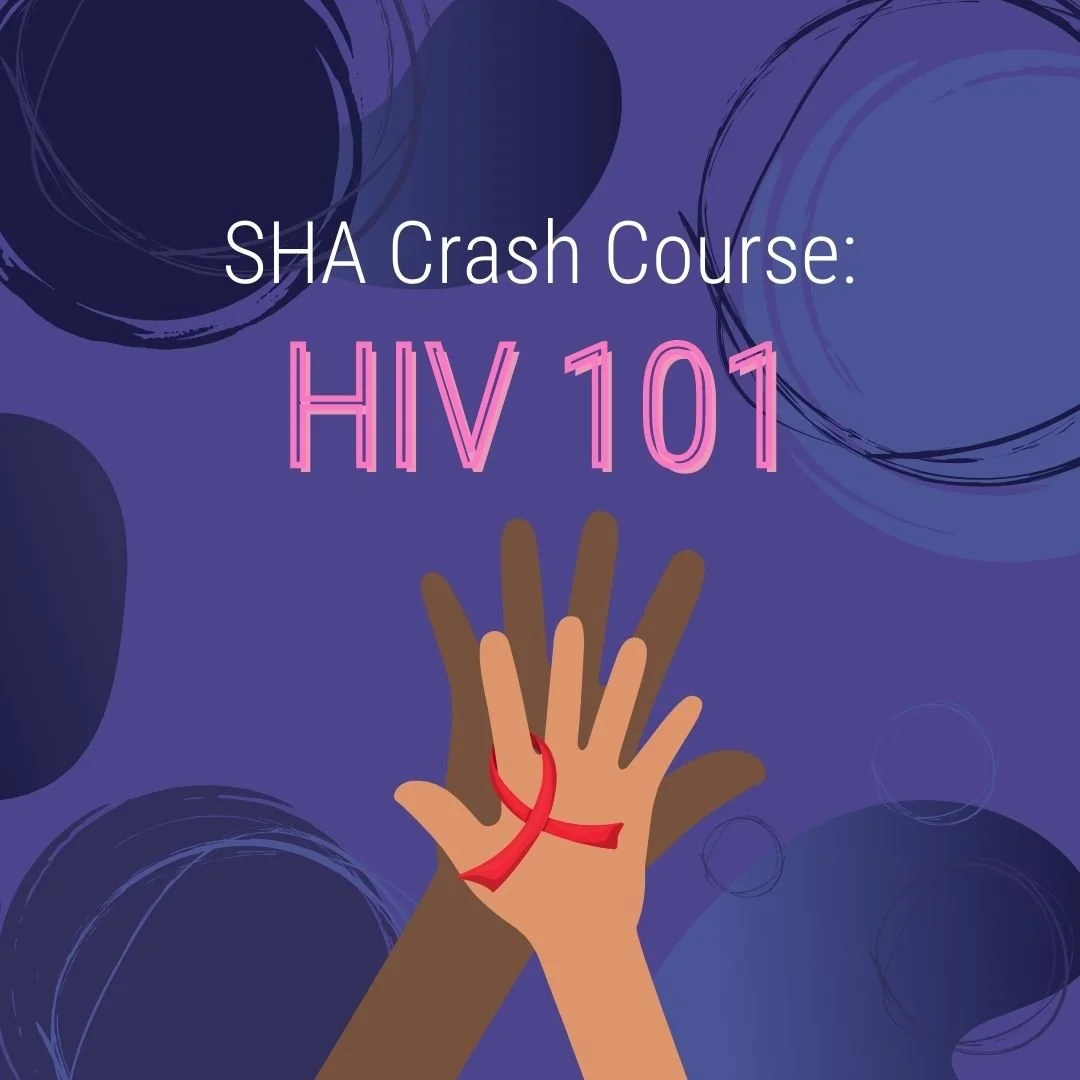Though most of us know of this disease, many of us are unaware of the specifics and may ascribe to common misconceptions. The Sexual Health Alliance strives for setting the record straight when it comes to sexuality, so this piece will break down the virus and the different medications for treatment as well as work to bust some common HIV myths.
HIV, or human immunodeficiency virus, is a virus that infects the body and, when left untreated, can develop into AIDS, or acquired immunodeficiency syndrome. HIV is spread through bodily fluids—including blood, semen, rectal and vaginal fluids, and breast milk, which enter the thin membrane or open skin of another person. Transmission can occur through sex, most commonly anal sex, but also through vaginal and oral sex. You can also get or spread HIV through sharing needles with another person, most commonly to inject drugs. On occasion, mothers can unknowingly spread HIV to their children during pregnancy and birth. There is currently no cure for HIV or AIDS, but there are medications that can decrease the transmission rates of HIV and help manage symptoms to live.
Pre-exposure prophylaxis, or PrEP, is a medication that decreases your likelihood of contracting HIV, even if you are in transmission contact with an HIV-positive person. According to the CDC, PrEP, if taken correctly, is 99% effective for sex and 74% effective for injections. Combining PrEP with other measures like barrier contraception and hygienic practices is the best way to ensure your protection from transmission. Currently, there are two approved pill forms of the drug and one shot; consult your doctor about which of these methods is best for you and your lifestyle. Most medical insurance plans including Medicaid will fully cover PrEP, but for anyone without insurance, there are programs available.
Opposite PrEP is Pep, or post-exposure prophylaxis, which is used to reduce your likelihood of HIV after a known exposure. This medication may be needed if the primary barrier method failed (like a condom breaking) or after sexual assault. It is most effective when taken as soon as possible (within a 72 hour window), and must be taken consistently for 28 days to prevent HIV from entering the body’s cells. Missing a dose or ending the treatment before the full 28 day course decreases the percentage of effectiveness of the drug. The cost of Pep varies depending on the reason for taking it, but manufacturers often offer programs for low cost distribution if needed. Only designed to be used in emergency situations, Pep acts like Plan B for pregnancy whilst PrEP acts like the birth control pill.
To be clear, PrEP and Pep are not treatments for HIV, but rather tools to decrease the risk of contracting it. There is another medication referred to as ART, or antiretroviral therapy, which can decrease the level of HIV in one’s body once they have contracted it. HIV in the body is referred to as a viral load, and if the amount is decreased enough, it is possible to stop the spread of HIV, even through sexual contact with an uninfected individual. ART can decrease the viral load in different amounts; a decrease is positive for the immune system of the host, but only an “undetectable” viral load will not transmit HIV. It can take six months of regular medication, but at the undetectable level, there is no risk of sexual transmission or natal transmission. It is important to note that even at the undetectable level, HIV can still be transmitted through injections and breastfeeding. Those on ART are recommended to take the medication for the rest of their lives, because as soon as the medication is discontinued, the virus can resume growing in the body and could develop into AIDS.
There are still so many myths and misconceptions about HIV. Most often, people do not understand the distinction between HIV and AIDS. After contracting HIV, you could experience flu-like symptoms for around a month, including fever, chills, mouth ulcers, and nausea. Beyond this, HIV itself does not impact the health or fertility of its host, but it requires honest and vigilant sexual communication. The Cleveland Health Clinic estimates that it takes ten years for untreated HIV to develop into AIDS, wherein the immune system is severely weakened and susceptible to infections. While AIDS is the primary factor of many deaths, most who have it will ultimately die from a viral infection that a healthy immune system would be able to fight off. In most cases, those with HIV exhibit no signs of infection and are not visibly ill, which is why STD testing is so important.
There’s a common misconception that only queer men are at risk for HIV, but that is completely untrue. While anal sex is a common means of transmission, not every person that engages in anal sex will get HIV and not every person with HIV engages in anal sex.. The narrative that cisgender gay men are the only population at risk for HIV and AIDS was spread in the 1980s at the height of the AIDS epidemic and carried through almost forty years later. Calling AIDS “the gay disease” allowed people to attribute a widespread, grave illness to “lifestyle choices” implying that death is a fair punishment for homosexuality. While it’s true that queer communities suffered disproportionately severe tragedy at the hands of HIV, it is not true that they are the only group at risk. In fact, people with vaginas who have sex with people with penises are estimated to be at the highest risk for contracting HIV because of the contact between the thin vaginal wall and semen. Misconceptions like these are not only discriminatory but also extremely dangerous because other at-risk populations become less likely to seek testing and treatment as a result.
By Sydney Sullivan




